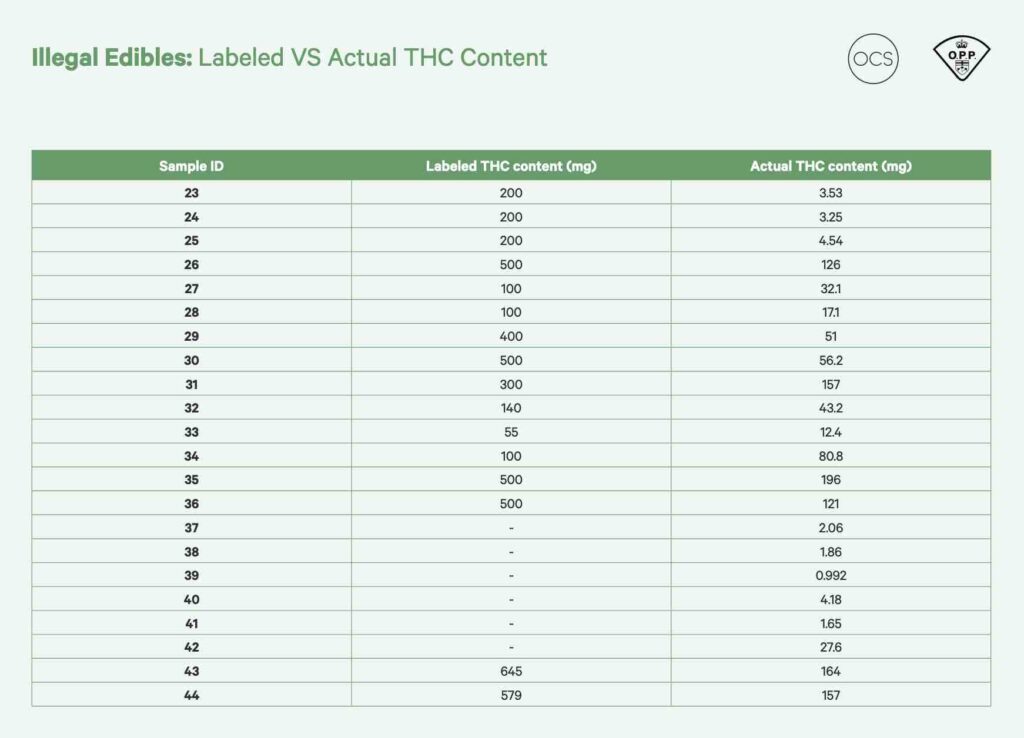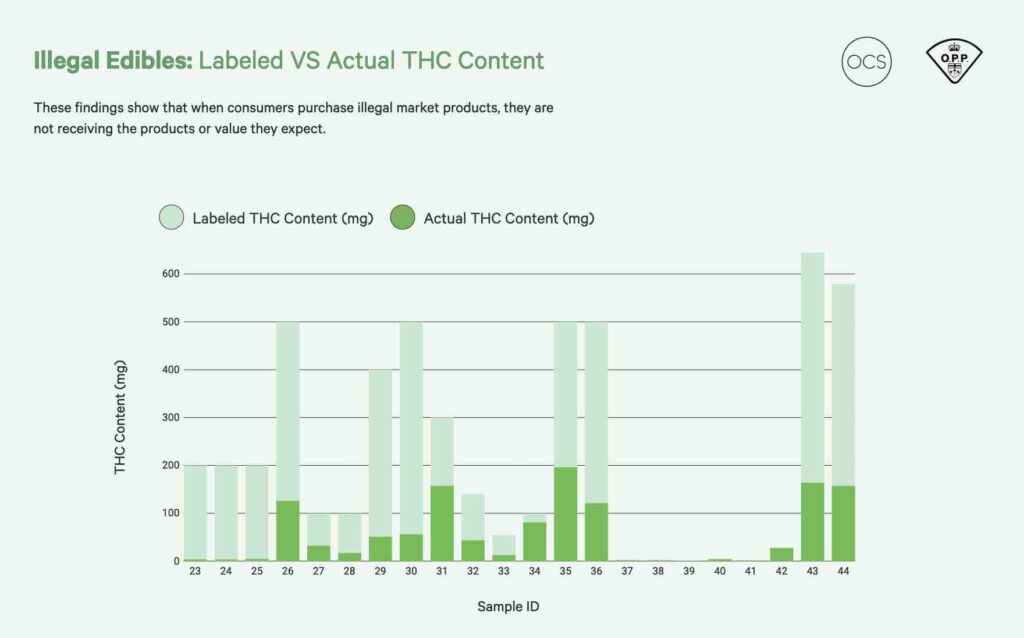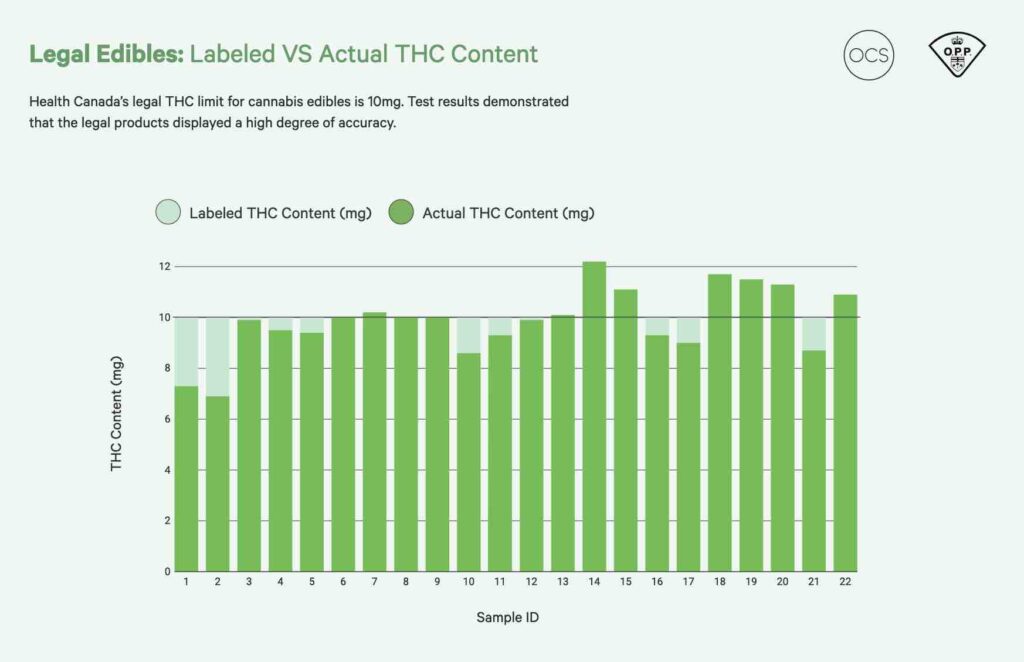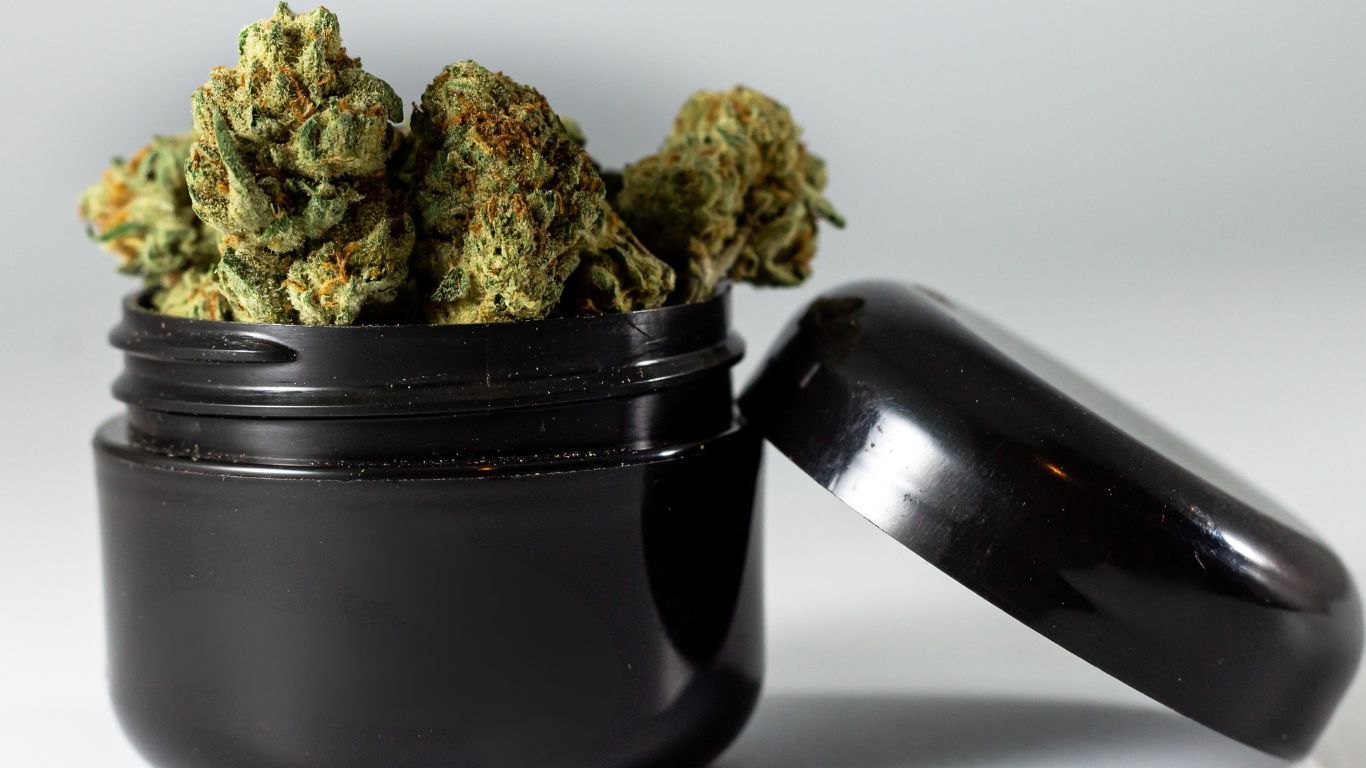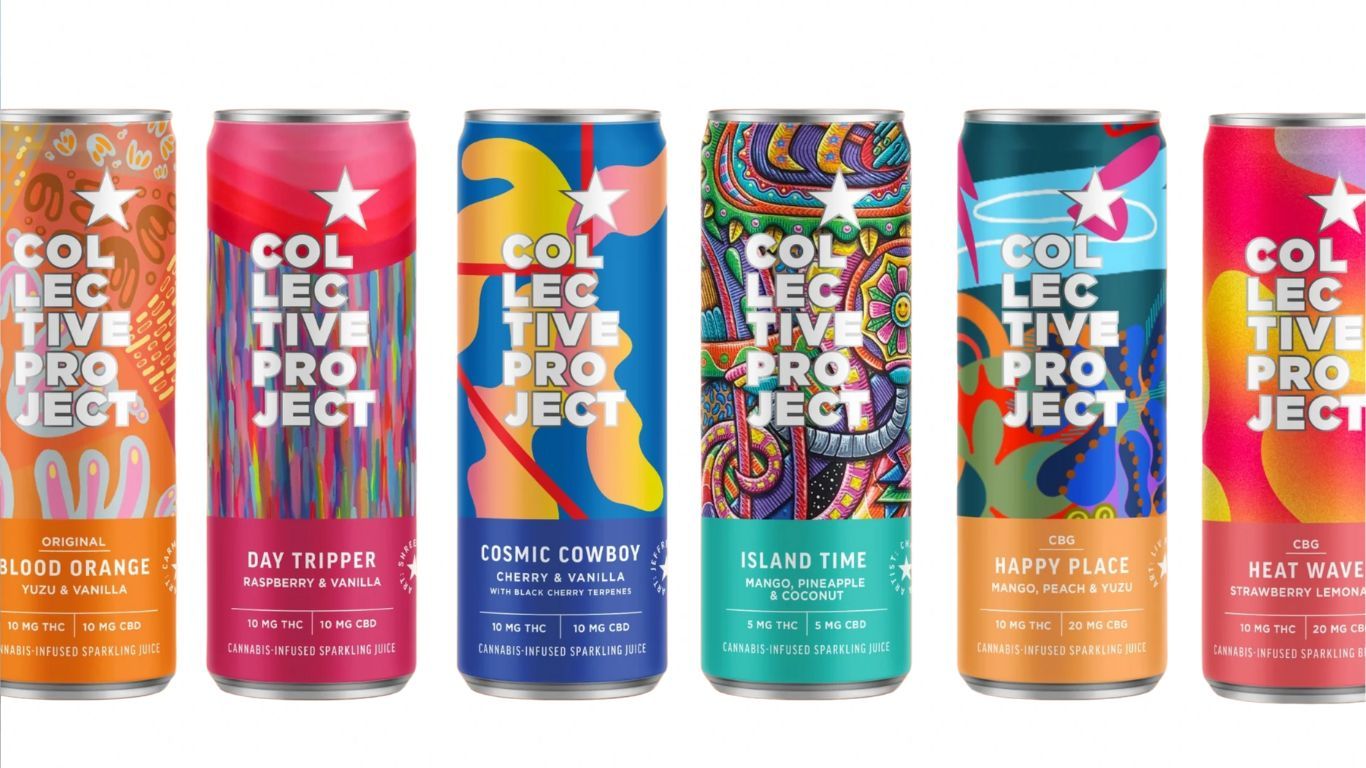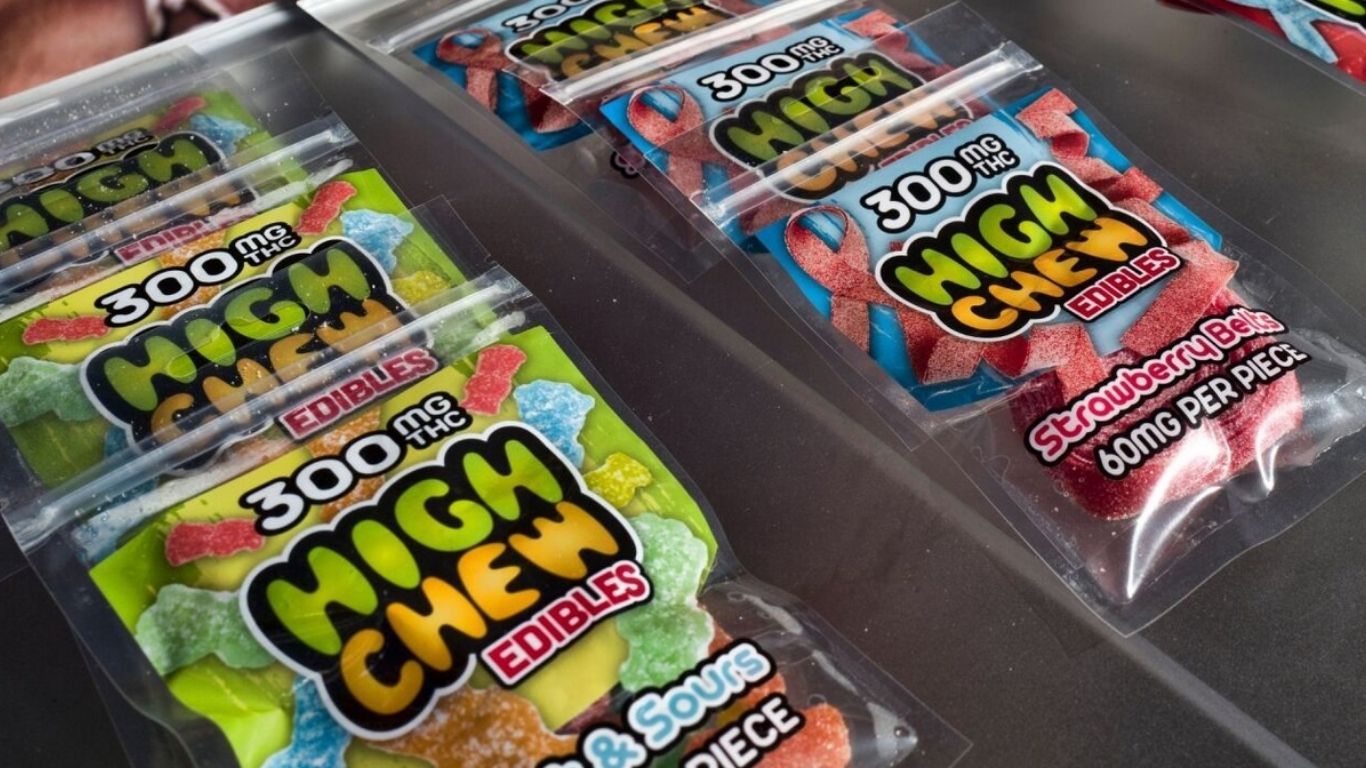
The Ontario Cannabis Store has released a study looking at testing results of legal and illegal cannabis edibles.
The results, says the government agency, demonstrate that the illegal cannabis products had significantly less THC than advertised and contained high levels of pesticides not authorized for use on cannabis.
The study was conducted by the National Research Council Canada (NRC) on behalf of the Ontario Cannabis Store (OCS) and Ontario Provincial Police (OPP) and is similar to testing results released by the OPP last year on dried cannabis and vape pens.
The newest study took samples from 44 edible cannabis products—22 legal products purchased from the OCS, and 22 illegal products seized by the OPP Provincial Joint Force Cannabis Enforcement Team (PJFCET) during cannabis enforcement investigations.
Daffyd Roderick, senior director of communications and social responsibility at the OCS, says they hope to provide more testing results like this in the future, potentially by the end of this year or early next year.
“I think with edibles it’s even more critical to understand dosage and dosing because onset can be delayed. I think it’s a good piece of information for consumers to have when they consider their choices.”
Daffyd Roderick, senior director of communications and social responsibility at the OCS
“As part of our commitment to responsible consumption of adult recreational cannabis, it’s important to help consumers make informed choices,” explains Roderick. “This is an initial commitment that we have made to doing this testing and we will be continuing this going forward.”
“We were aware of the work that the OPP was doing with the NRC on dried flower and vape pens and it sparked our curiosity on what a similar test would look like for edible products. I think people, rightfully so, are careful about what they put into their body and OCS thought this was a good way to extend the conversation a little.”
“I think with edibles it’s even more critical to understand dosage and dosing because onset can be delayed,” he continues. “I think it’s a good piece of information for consumers to have when they consider their choices.”
The test results showed that the legal edible products displayed a significantly higher degree of accuracy in THC levels than the illicit edible products when compared to their advertised amounts. The samples of illicit edibles had, on average, only 20% of the advertised THC levels. Some illegal samples contained up to 50 times below the advertised levels on the packaging.
Inaccurate THC levels were not the only issue with the illicit products. Of the 22 illegal products tested, 19 contained at least one illicit pesticide, many of which were found to be several hundred times above the reporting limits listed in Health Canada’s mandatory pesticide testing requirements for cannabis.
Results showed that 86% (19 out of 22) of the illicit edibles samples that were tested were found to contain multiple pesticides such as piperonyl butoxide, myclobutanil, and permethrins, some of which were several hundred times more than the established Health Canada limit. One illegal sample contained ten different pesticide residues, and the majority of illegal products contained at least two pesticides.
Only two of the legal samples were found to contain trace levels of pesticides, very near or below the limits established by Health Canada.
“The Ontario Cannabis Store (OCS) is committed to the legal cannabis market in Ontario – a market that prioritizes responsible, informed consumption and provides a safe alternative to the illicit market,” said Connie Dejak, Chair of the OCRC Board of Directors. “Working with valued partners like the OPP and other law enforcement agencies, we intend to continue to invest in research that provides our consumers with the information they need to make educated decisions around their purchased consumption choices.”
Several samples of the illegal edibles also contained very small amounts of THC (< 0.2 mg), and testing showed that THC was only present on the surface of the edible, which researchers say may have been produced by spraying THC onto existing commercial products, rather than infusing the oil into an original product.
Some of the samples of illegal edibles had significant discrepancies between stated THC levels and actual THC levels. Three edibles that were listed as high as 200mg THC actually had under 5mg THC. Several labeled as having 500mg THC had less than 200mg THC.
New Brunswick and British Columbia have released their own similar testing results looking at illicit products.
In New Brunswick, seven illicit flower samples and six illicit edibles samples were obtained from several unlicensed New Brunswick storefronts, along with four legal flower types and five legal edible types from Cannabis NB.
The results showed the majority of illicit flower and edibles had THC levels far below advertised amounts, as well as higher than acceptable limits for several microbiological contaminants and pesticides. While all legal products passed testing for THC, microbiological contaminants, and pesticides, most THC levels were slightly under the advertised amounts, and one was low enough to be outside of acceptable deviation limits, likely due to age of product.
BC released a pilot project in 2021 that tested 20 dried cannabis samples that were seized from six illicit stores across Metro Vancouver by BC’s Community Safety Unit (CSU). The CSU is BC’s enforcement agency as it relates to illicit cannabis retail.
The samples went to a federally licensed lab for testing and the results show 24 pesticides, along with high levels of bacteria, fungi and heavy metals in many of the samples. These samples were subjected to the same full panel of analyses to detect chemical and microbial contaminants as licensed cannabis producers are required to use. Twenty-four pesticide residues were detected in 18 samples, and only two samples contained no detectable pesticide residues.

